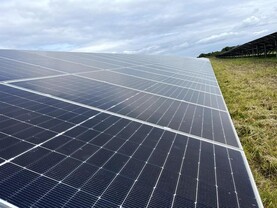In response to the IFA’s proposal of strong TAMS II funding for sheep investments to include sheep fencing, Senator Mary O’Brien declared that it’s a “no-brainer”.
The IFA had a number of proposals for the sheep sector:
Sheep-specific payments equivalent to €20 per ewe targeted at active producers;Priority access to GLAS payments of €5,000 pa;Increased knowledge transfer payments for 10,000 flock owners;Strong TAMS II funding for sheep investments, including sheep fencing;Reversal of the cuts to ANC payments (Disadvantage Area Payments);Government action to secure access to new markets (China and USA);Independent research and strong advisory service from Teagasc;Increased promotions from Bord Bia and price premium for Quality Assurance lamb; and,Strong sheep breeding programme from Sheep Ireland.There was widespread support from the committee on all aspects of the IFA’s proposals, due to the sector’s importance to the rural economy. However, the point was raised that there is little being done in terms of succession. There is a concern that the unattractiveness of sheep farming for young farmers is a major issue for the future of the sector.
While 22 member states across the EU have introduced coupled payments for sheep in CAP, Senator Michael Comiskey suggested that a limit on a coupled payment would be necessary.
“We must be careful not to drive numbers and create an overgrazing problem again,” he said.
IFA National Sheep Committee chairman John Lynskey said to maintain the national sheep flock, the sheep sector requires targeted, sheep-specific payments to the equivalent of €20/ewe. He said the IFA is demanding that Minister Coveney starts providing funding for this, with priority access to a number of the schemes and the allocation of €25m for a direct payment.
In response to the IFA’s proposal of strong TAMS II funding for sheep investments to include sheep fencing, Senator Mary O’Brien declared that it’s a “no-brainer”.
The IFA had a number of proposals for the sheep sector:
Sheep-specific payments equivalent to €20 per ewe targeted at active producers;Priority access to GLAS payments of €5,000 pa;Increased knowledge transfer payments for 10,000 flock owners;Strong TAMS II funding for sheep investments, including sheep fencing;Reversal of the cuts to ANC payments (Disadvantage Area Payments);Government action to secure access to new markets (China and USA);Independent research and strong advisory service from Teagasc;Increased promotions from Bord Bia and price premium for Quality Assurance lamb; and,Strong sheep breeding programme from Sheep Ireland.There was widespread support from the committee on all aspects of the IFA’s proposals, due to the sector’s importance to the rural economy. However, the point was raised that there is little being done in terms of succession. There is a concern that the unattractiveness of sheep farming for young farmers is a major issue for the future of the sector.
While 22 member states across the EU have introduced coupled payments for sheep in CAP, Senator Michael Comiskey suggested that a limit on a coupled payment would be necessary.
“We must be careful not to drive numbers and create an overgrazing problem again,” he said.
IFA National Sheep Committee chairman John Lynskey said to maintain the national sheep flock, the sheep sector requires targeted, sheep-specific payments to the equivalent of €20/ewe. He said the IFA is demanding that Minister Coveney starts providing funding for this, with priority access to a number of the schemes and the allocation of €25m for a direct payment.






 This is a subscriber-only article
This is a subscriber-only article









SHARING OPTIONS: